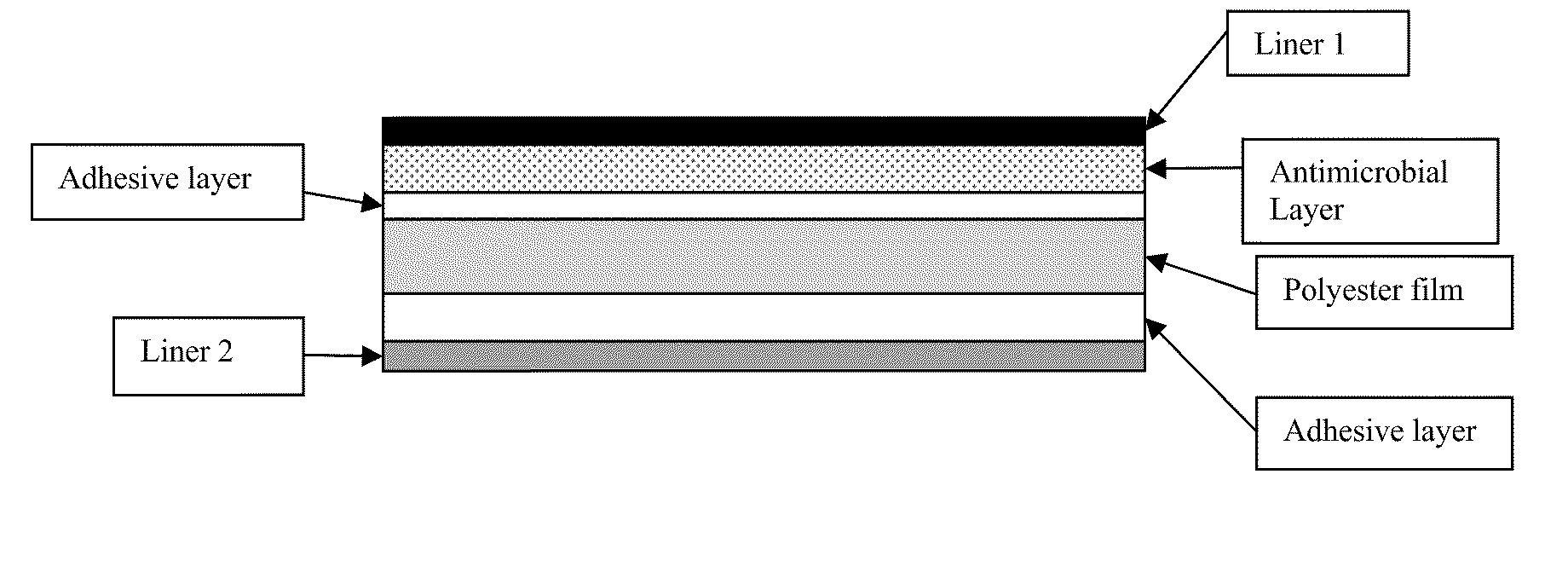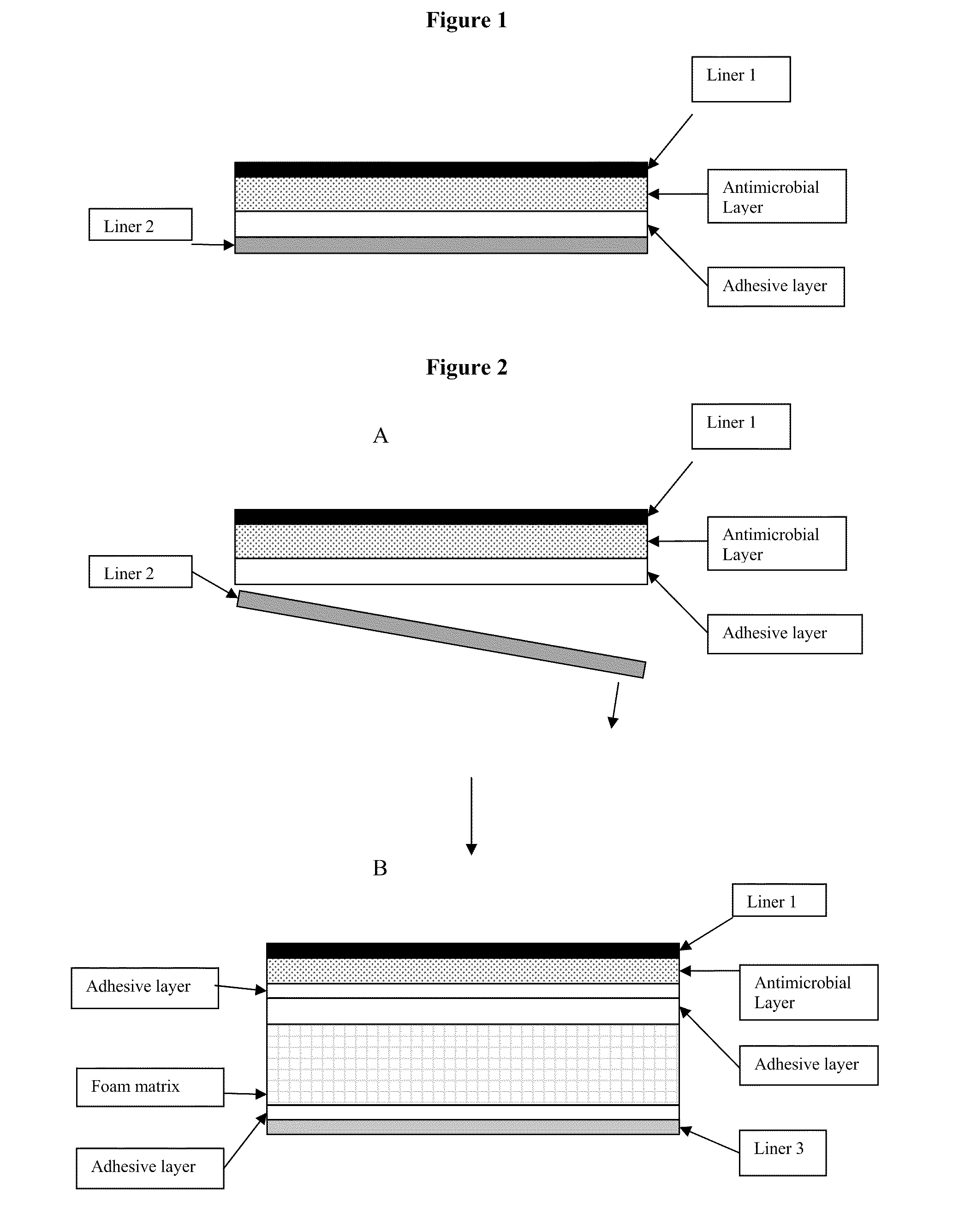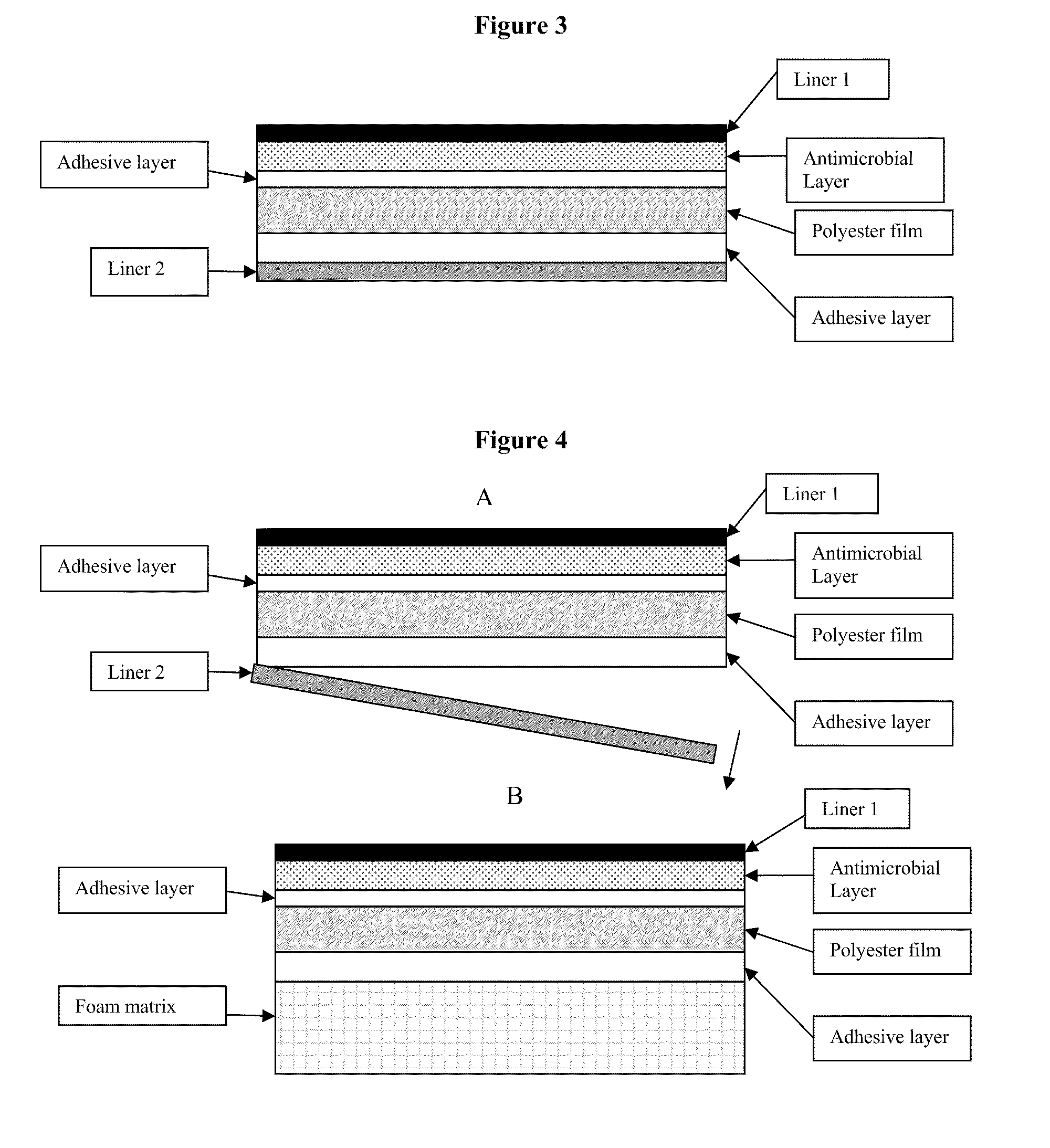Antimicrobial laminate constructs
a technology of laminate construction and antimicrobial bacteria, which is applied in the direction of film/foil adhesives, bandages, transportation and packaging, etc., can solve the problems of increased hospital acquired infections, increased treatment costs and patient deaths, and infections of patients associated with medical devices
- Summary
- Abstract
- Description
- Claims
- Application Information
AI Technical Summary
Benefits of technology
Problems solved by technology
Method used
Image
Examples
example 1
Preparation of Silver Laminate Construct and Application to Foam
[0076]Preparation of silver saccharinate slurry: In two 50 ml conical polypropylene tubes (Falcon brand), sodium saccharinate (15 ml, 0.125M) and silver nitrate (15 ml, 0.1M) were mixed to form silver saccharinate precipitate. The tubes were vortexed and then centrifuged at 6000 rpm for 10 minutes. The supernatants were decanted and discarded. De-ionized water was then added to each tube and then vortexed again. The slurries in each tube were combined to a single tube and the contents centrifuged as before. The supernatant was decanted and the solids were washed with de-ionized water one more time. After decanting the final wash supernatant a precipitate of silver saccharinate solids remained. To the solids was added 2 ml of ethyl cellulose solution (Dow Chemical Company, Midland, Mich., Ethocel Standard 10 Premium grade, 3% w / v) and then the total content was vortexed to obtain uniform viscous opaque white slurry.
[0077...
example 2
Determination of Silver Content of the Liner with Silver Saccharinate Layer
[0082]Several small pieces of liner coated with a silver antimicrobial layer (without the adhesive) were cut from the large piece made in Example 1. Using several uncoated liner pieces of different sizes, a correlation between the weight of the liner and its area was established as follows. Weight of liner=0.0073×(Area)+0.0024
[0083]From the size of the silver coated pieces, their liner weights were estimated with the help the above correlation. The individual pieces were stripped of their silver and their silver content was calculated in ppm from FAAS results and their silver loading was estimated at ˜143±12.1 μg / cm2.
[0084]The uniformity of the silver saccharinate coating was established by preparing three different coated samples and analyzing them for silver by FAAS. The results showed silver loading values of 157, 161 and 152 μg / cm2 respectively. The values are quite close indicating that the coating proce...
example 3
Long Term Antimicrobial Efficacy of Foam Construct with Silver Laminate Construct
[0085]An EVA foam was made antimicrobial using a laminate construct made according to Example 1 was tested for long term antimicrobial efficacy in serial transfer zone of inhibition assays. Briefly, the sample from a 24 h ZOI assay was transferred to a second petri-dish coated with a fresh lawn of bacteria and incubated at 37° C. for 24 h as before. The serial transfer step was continued until clear zones were no longer seen. By this method a duration of at least 10 days was observed before the testing was terminated. In this example, the antimicrobial activity was observed for at least 10 days for foam with silver loading for ˜190 μg / cm2.
PUM
| Property | Measurement | Unit |
|---|---|---|
| Temperature | aaaaa | aaaaa |
| Fraction | aaaaa | aaaaa |
| Fraction | aaaaa | aaaaa |
Abstract
Description
Claims
Application Information
 Login to View More
Login to View More - R&D
- Intellectual Property
- Life Sciences
- Materials
- Tech Scout
- Unparalleled Data Quality
- Higher Quality Content
- 60% Fewer Hallucinations
Browse by: Latest US Patents, China's latest patents, Technical Efficacy Thesaurus, Application Domain, Technology Topic, Popular Technical Reports.
© 2025 PatSnap. All rights reserved.Legal|Privacy policy|Modern Slavery Act Transparency Statement|Sitemap|About US| Contact US: help@patsnap.com



